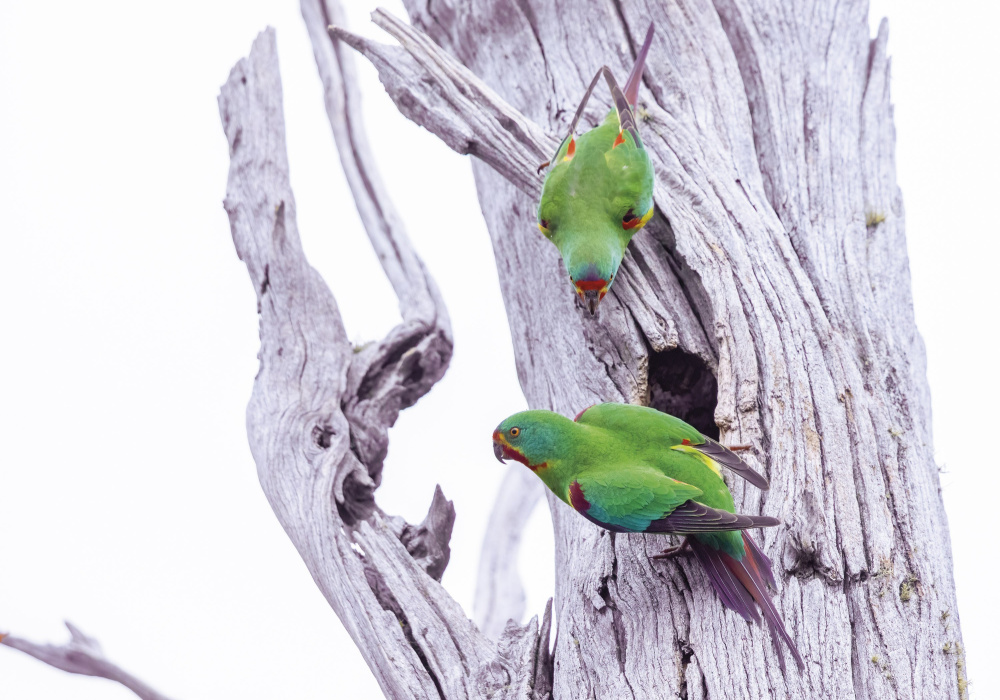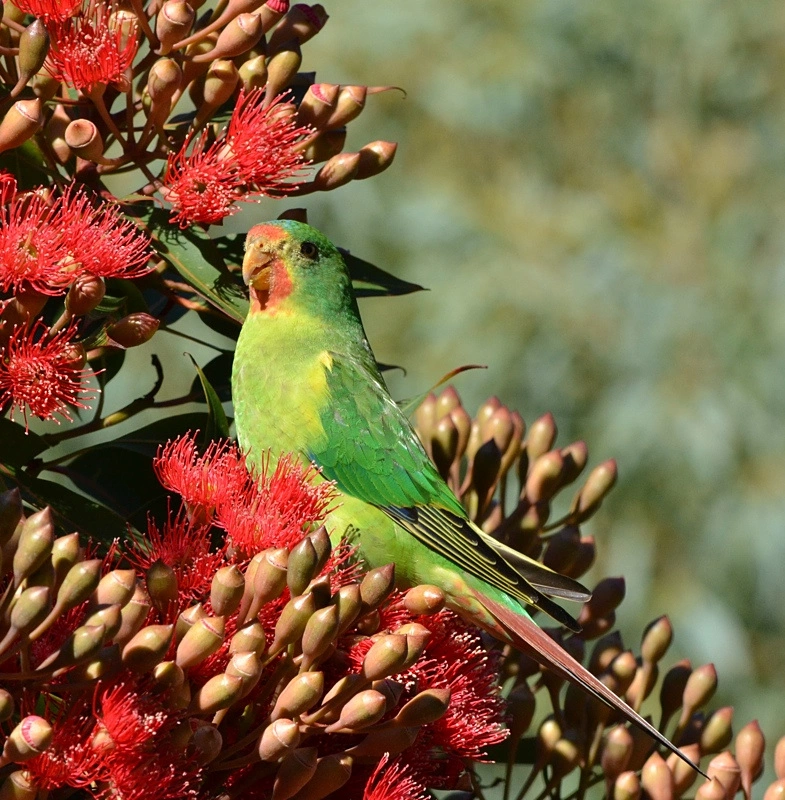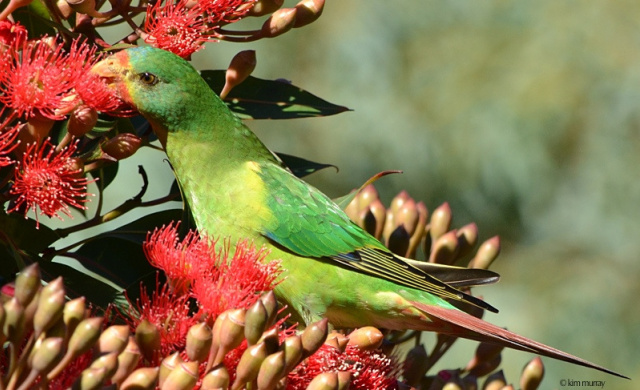Swift Parrot
The beautiful Swift Parrot: facing the threat of extinction
The Swift parrot is a species of broad-tailed parrot only found in south-eastern Australia. It breeds in Tasmania during summer and moves north to New South Wales and Victoria in winter. It is one of just three migratory parrots on earth.
With only around 500-750 individuals left in the world, the Swift parrot is critically endangered. It's main threat is habitat loss due to human activities, and the introduced sugar glider praying on nesting adults and chicks.
Swift Parrot
Swifties
Lathamus discolor
Bird. Psittacidae family, which includes all parrots, cockatoos, and related birds.
The Swift Parrot is a medium sized parrot with pointed wings and a purplish red tail. Its body is mostly lime green with a darkish blue patch on the head, the throat and forehead is deeper red. There are also red feathers at the bend of the wing.

Swift parrots in hollow tree. By: Rob Blakers
23-25cm long
Swift parrots are an incredible bird. Did you know that they can sleep and eat while in the air?
They spend breeding seasons on Bruny Island. When that is over they form big groups of about three hundred to fly over to NSW and VIC. They break up into smaller groups while crossing the Bass Straight.
They have nectar in small groups or large ones, and they especially enjoy Tasmania’s blue gum, and insects found on eucalyptus leaves. These feeding groups can be very noisy because the birds talk and chatter and bicker each other. They also chase each other around the trees.
The swift parrot spends the breeding months, February to March, nesting in trees on the east coast of Tasmania. After the breeding season is over large flocks of up to several hundred birds meet to fly as a group to move to northern Victoria and NSW. The break the big group into smaller ones of 10 to 20 to cross the Bass Strait.
These birds spend most of their time on mainland Australia but in February and March they come down to the east coast of Tasmania to breed.
Critically Endangered
The swift parrot is critically endangered, with the population estimated to be around 500-750 individuals. The species faces extinction due to threats like habitat loss from logging, nest predation by introduced sugar gliders, and climate change.
You can find the swift parrot on Bruny Island or Eastern Tasmania, North Victoria or NSW.
You might like...

The Swift Parrot - An incredible bird

Bruny Island crucial for the Swift Parrot

8 critical challenges for saving the Swift Parrot

The open water migration of three rare parrots
Newsletter
Sign up to keep in touch with articles, updates, events or news from Kuno, your platform for nature

